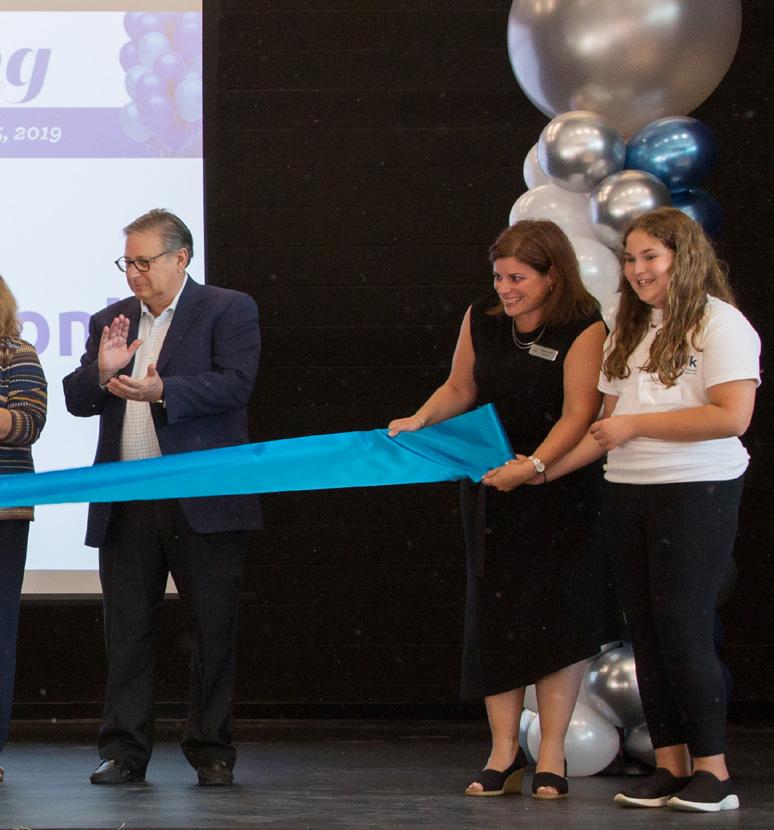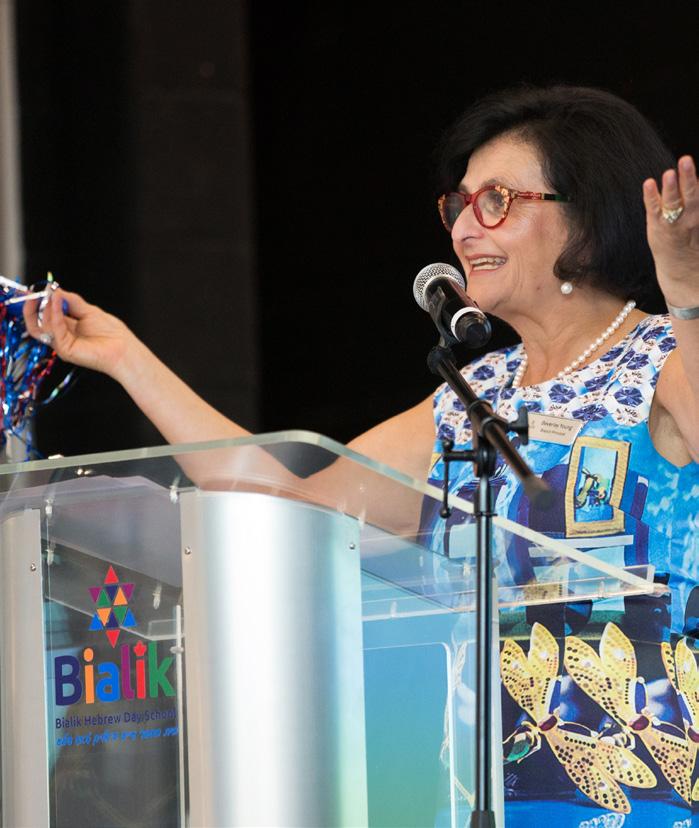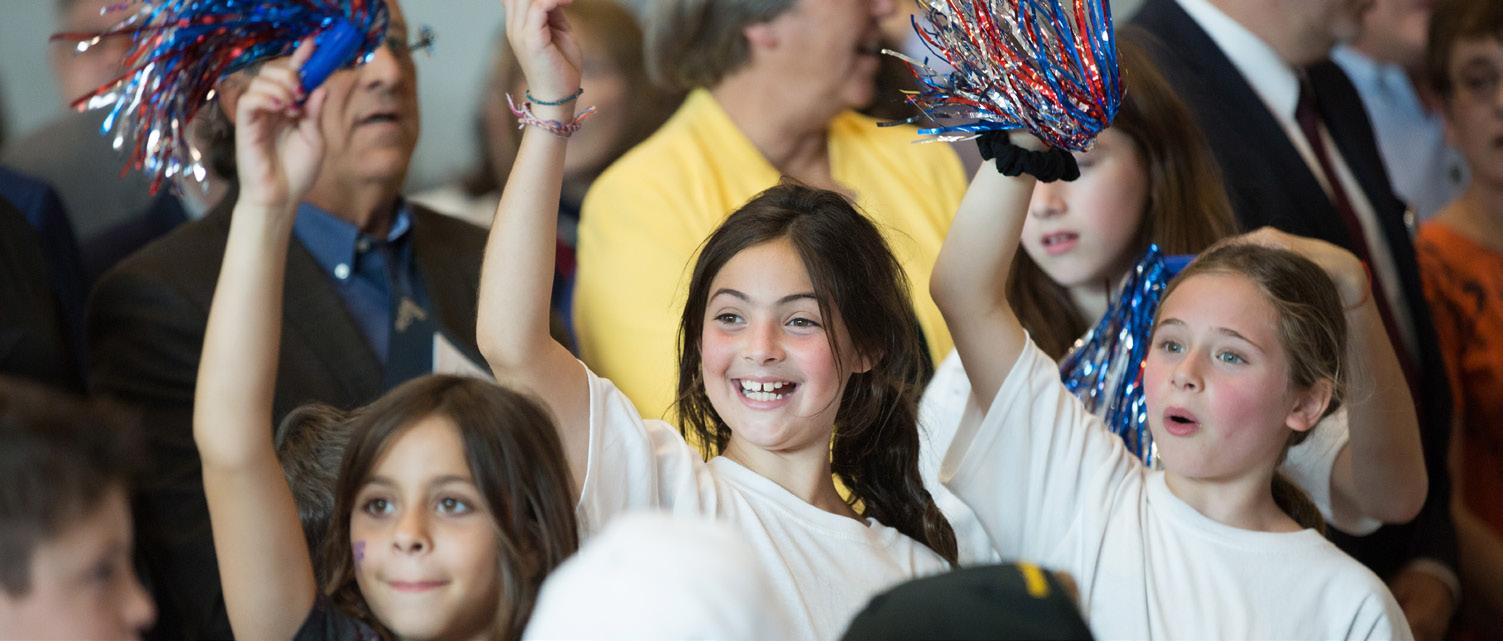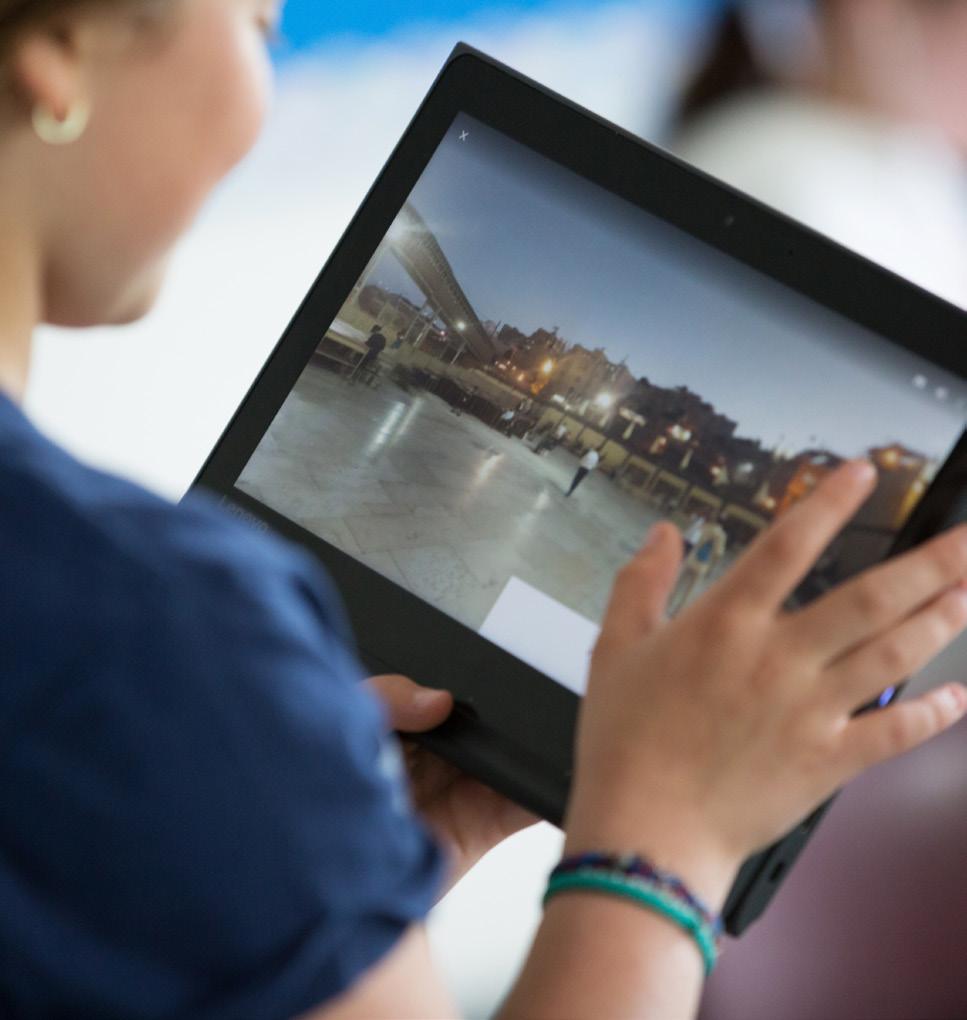
4 minute read
A Rousing Ribbon
HIMEL’S HEART BEATS BIALIK BLUE A Rousing Ribbon Cutting to Remember
The energy in our beautiful new gym was electric,” recounts Beverley Young, Himel Branch Principal. “The excitement was palpable and everyone joined in the spirit of our lively celebration, replete with pompoms and energetic Israeli music pulsating through the room.” These words capture the huge enthusiasm of the crowd of students, families, staff and community leaders who proudly celebrated the ribbon cutting for the new wing of our Himel Branch.
The festivities, held on September 5, 2019, marked the culmination of the branch’s second expansion in six years. Opening with only three classes and 64 students in 2013, this is now a thriving branch of 382 students and 38 staff. With this current expansion, Himel boasts 19 spacious classrooms, a large new gym, a STEM Lab and other communal learning spaces.
“The growth of Bialik, both in its physical size and in student enrolment, mirrors the growth and success of the Jewish community in the Vaughan region,” says Rochelle Waxman, President of Bialik’s “
Board. “This is a thriving centre of Jewish life and Bialik is extremely proud to be part of it.”
Bialik was thrilled to welcome many honoured guests to celebrate our exciting milestone, including Deborah Schulte, Member of Parliament represent
ing King-Vaughan, Mario Ferri, Local and Regional Councillor and Deputy Mayor of Vaughan, and Sandra Yeung Racco, City Councillor. Faces, old and new, from Bialik’s 58-year history mixed and mingled to catch up on the school’s incredible growth. Remarks from community leaders, including Jordan Falkenstein, Director of Government Affairs at the Consulate of Israel and Daniel Held, Executive Director of the Henry and Julia Koschitzky Centre for Jewish Education, spoke to Bialik’s standing in the Jewish community.
Our hearts were warmed by a performance by the Himel choir with their repertoire of Hebrew songs. Staff and students, from JK all the way to Grade 7, proudly wore their My Heart Beats Bialik Blue T-shirts (generously donated by the PTA) and gleefully shook their blue and white pompoms.
And then, the oldest and the youngest two students currently enrolled walked the ribbon across the stage for the moment we’d been anticipating — the ribbon cutting. When the blades of the scissors sliced down on the crisp blue ribbon, cheering erupted in the gym, with singing of Siman Tov U’Mazal Tov and dancing of the Hora.
“We all shared a truly special moment,” says Beverley Young. “The magically exuberant mood is etched into the annals of Himel’s history. It was certainly a night to remember!”



WISH YOU WERE HERE Virtual reality technology takes learning about Israel to the next level
Gone are the days when doing research about Israel meant going to the library — or even googling “Israel,” for that matter. As part of their Israeli Studies unit in Jewish History last May, each Grade 6 student had the incredible opportunity to create a virtual reality (VR) tour of Jerusalem, putting themselves at the centre of the action. Thanks to Bialik’s resident technology integrator, Merav Anafi, students used the just-released Google Tour Creator to create their own VR tour, using images from Google Street View plus other photos. They then immersed themselves in the world they had created using Expedition, a Chromebook app that imitates the experience of VR headsets.
“It truly makes learning authentic because the students are actually creating a place to visit; they’re building it themselves,” says Merav, who is the only Israeli expatriate to have received the country’s Google Certified Innovator designation. A pioneer in technology integration in education, she is amazed by its evolution since her initial curriculum development work in Israel in the 1990s. “Who would have thought we’d get to this point?”
Indeed, when it comes to describing VR, words fail! You have to experience it for yourself to see how incredibly immersive and realistic the effect can be. In the pilot project, Bialik students used the technology to pick eight scenes to “tour.” These included walking along cobblestone pathways in the Old City, visiting the Western Wall, and seeing exhibits inside the Israel Museum. In addition, students

were able to develop their Hebrew language skills by adding narration and text. And, they had a lot of fun overlaying images of themselves on their tours.
“Authenticity is one of the most important tools through which we can bring relevance to Jewish Studies and Hebrew language learning.” says Kathy Friedman, Director of Jewish Studies. “Students were trying to find their connection to Israel, Hebrew and Tanach. They heard about it, saw it in pictures and read about it, but they could not live it — at least, not until now. This is history through the lens of modern times. Students can walk in the footsteps of our ancestors and relate it to their experience today.”



